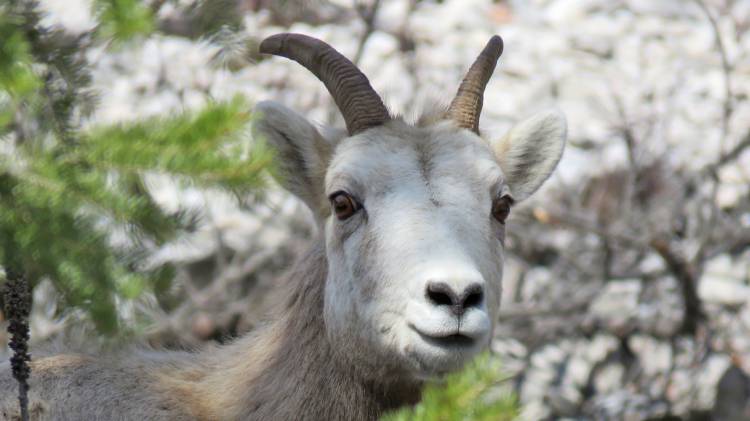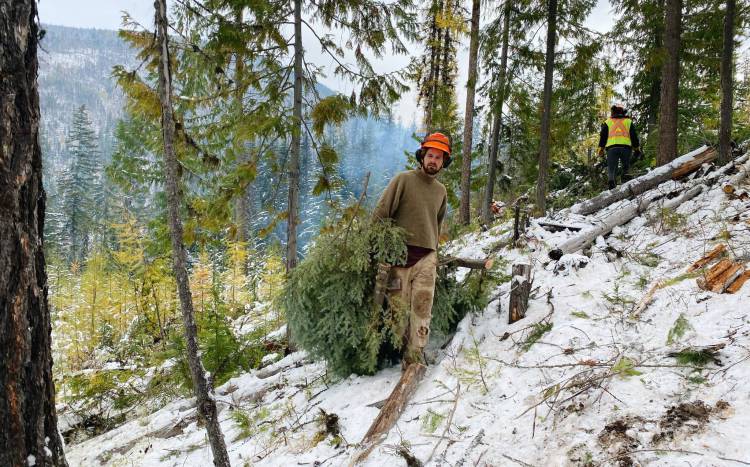2020 was unlike any year in recent history—the global pandemic touched each and every one of us. The biodiversity and climate crises continue, challenging us on a daily basis and yet, out of these crises emerged stories of hope and love, of communities coming together, and a growing recognition of the importance of nature in our human and planetary health.
As I look forward to our priorities for 2021, I carry a profound sense of hope that this year, we will take the tragedy of 2020 and turn it into action, using this opportunity to invest in nature and a green recovery.
We started the year with the historic announcement that the Ktunaxa Nation, alongside provincial and federal governments, would be establishing an Indigenous Protected and Conserved Area (IPCA), to protect the spiritual and ecological values of Qat’muk (which includes the Jumbo Valley). There could be no better outcome to 30 years of defending Jumbo from the Jumbo Glacier Resort. We look forward to supporting the Ktunaxa’s efforts this year. There are still threats to grizzly bears in the Purcell and Selkirk Mountains, such as the proposed Zincton Resort near New Denver, as well as increasing recreation, ongoing industrial logging and road building cutting into these valleys.

Ancient forests are being chopped down at an alarming rate. These old growth forests support many wildlife species, and play a critical role in storing carbon, yet we continue to log them in BC, even with so little old growth left. On the heels of a report calling for a paradigm shift in how we do forestry and an election promise from Premier John Horgan to implement all recommendations from this report, 2021 could be the year when we finally start protecting our precious old growth. Our Inland Temperate Rainforest (ITR) is globally unique, mostly unprotected and home to many old growth dependent species like the endangered mountain caribou. If we want a future for caribou, we need to protect our remaining old growth forests. There is no justifiable reason to log our remaining ancient forests.
Late last year, we celebrated a victory when our supporters raised their voices to protect the Argonaut Creek drainage in the ITR near Revelstoke, home to old growth forests and mountain caribou, leading to a halt in logging. People power works—when we speak up collectively to defend what we love, change can happen. This year, let’s continue to stand up to demand the protection of what’s left of our old growth forests.
Similarly, an outcry over the proposed Castle coal mine in the Elk Valley, which would extend mining until 2070, led to the federal government’s decision to conduct a federal environmental assessment, citing impacts to fish, First Nations communities and species at risk. The proposed mine includes high elevation grasslands, critical winter habitat for bighorn sheep and would add much more long-term selenium and other water pollution to rivers that are already on the brink. And with alternatives to coal-based steelmaking already available, it’s clear we can’t afford to lock in decades more carbon emissions from coal mining and use.
Highway 3 is now safer for wildlife and people with the completion of the new Lizard Creek Bridge that includes wildlife underpasses on both sides of the bridge. 2021 will see a new wildlife underpass near Jaffray—and we’re pushing for more safe crossings for wildlife in this crucial connectivity corridor.

Highways are just one of many threats wildlife are facing in our region. Shrinking and changing habitats are challenging their ability to thrive and move throughout the landscape. We are seeing significant declines in elk, moose, Rocky Mountain Bighorn Sheep, mountain goats and wolverine populations, to name just a few. Vast networks of resource roads in our backcountry bring wildlife in contact with humans more frequently; in the Elk Valley alone, there are 5,630 km of resource roads, primarily built for industrial forestry or mining activities. Rehabilitating these roads is named as the highest priority action to address impacts to wildlife in the Elk Valley. Last year, 30 kms of road were converted back to a natural state, but there are many more kilometres to reclaim in 2021.
Across the region, five local Wildsight branches bring together passion and action to drive change in our communities. Last year, the Elk Valley Branch launched a new store, Local that provides year-round access to local products, supporting local producers and increasing food security at the same time. The Golden Branch found more than 100 bank swallow colonies in the Columbia Wetlands through the Columbia Valley Swallow Project. The Creston Branch undertook a Green Mapping project to support land-use processes and preserve the Creston Valley’s rich biodiversity. The Invermere Branch launched Spark, Canada’s first rural electric vehicle share. And the Kimberley-Cranbrook Branch ran another highly successful Farmers’ Market last summer.

The Youth Climate Corps launched this fall, connecting youth with hands-on climate action. A crew of 14 youth aged 18-29 carried out projects from wildfire mitigation around West Arm Provincial Park and the City of Nelson to stream restoration in the Slocan Valley in partnership with local partners while learning valuable skills. We hope to expand this program to new Kootenay communities this year.
And last, but certainly not least, we celebrated our 20th year of environmental education programs. Since 2000, we’ve taken more than 85,000 kids outside to connect with their wild backyards and watersheds through our eight different education programs! In a time when we need nature more than ever, our environmental education programs offer kids the opportunity to learn about the wild wonders outside their classroom and connect to the natural world, fostering the next generation of environmental stewards.
When schools closed in March, our education team pivoted, creating a library of online resources to support parents to get their kids outside. We heard from parents and teachers right across Canada who used these resources! When classes resumed in the fall, our team was perfectly placed to deliver programs outside in-line with COVID protocols. We also piloted a new Climate Change Education program for grade 10 students that we hope to expand this program to the whole Columbia Basin.
I am inspired each day working with the Wildsight team to protect nature and this incredible place we call home. I hope we’ll look back at 2021 and celebrate how we used the global recovery efforts to walk a new path in the Kootenays – investing in nature, our true life support system.








